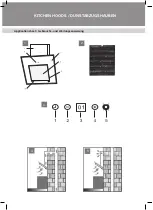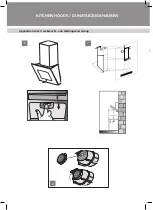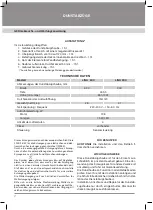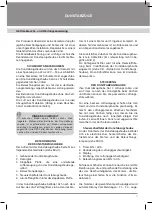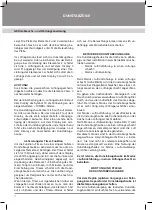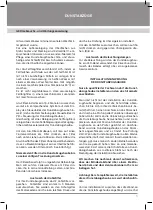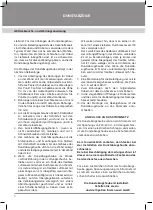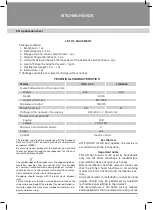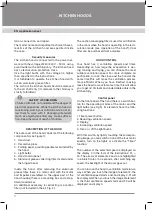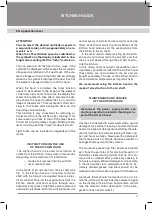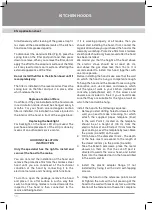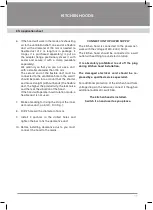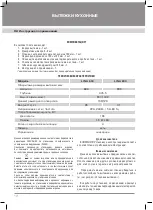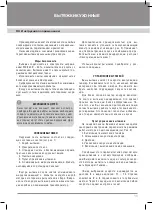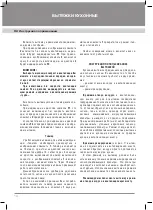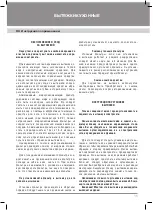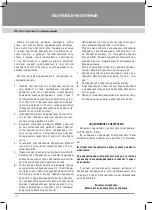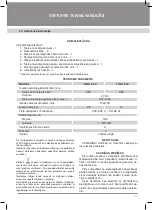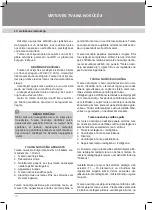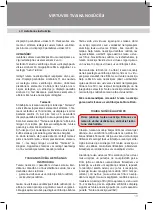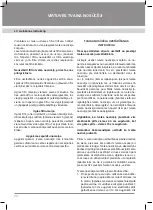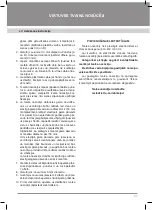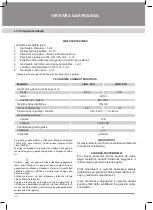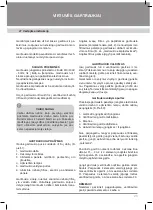
8
EN Application sheet
KITCHEN HOODS
lation, connection and repair.
The model name and important technical charac-
teristics of the kitchen hood are specified inside
the case.
Security measures
The kitchen hood is connected to the power net-
work with the voltage of 220/240 V – 50 Hz, using
a wall outlet with earthing only. The kitchen hood
has 1 electrocution protection class.
Use the light bulbs with the voltage no higher
than specified in the Instructions.
It is forbidden to operate the kitchen hood with-
out an aluminum grease filter.
The air from the kitchen hood should be removed
to the air shaft only (its removal to the chimney is
strictly forbidden).
SAFETY OF CHILDREN
Children often do not understand the danger of
electrical appliances. While the kitchen hood is
functioning, watch your children and do not al-
low them to work with it. Packaging materials
(such as polyethylene film) may cause suffoca-
tion. Keep them out of reach of children
DESCRIPTION OF THE HOOD
The outer part of the hood consists of the following
components (see Figure 1):
1. Hood duct.
2. Decorative glass.
3. Folding panel, providing perimeter air indraft by
the hood.
4. Light bulbs
5. Hood control panel.
6. Aluminum grease-collecting filter, located under
the hinged panel
Inside the hood, after removing the aluminum
grease filter, there is a motor duct with the motor
and impeller assembled. In the upper part of the
hood housing there is a mounting box and a step-
down transformer.
An additional accessory for extracting is a carbon
filter (not included in the kit, Fig. 2).
The carbon scavenging filter is used for air filtration
in the room when the hood is operating in the recir-
culation mode (see Operation of the hood"). Coal
filter can be purchased from a retailer.
HOOD CONTROL
Your hood has 4 ventilation speeds and timer.
Depending on how large the evaporation is dur-
ing cooking and frying, you can choose the most
suitable ventilation speed. For more complete air
purification, turn on the stove and the hood at the
same time.This will make the ventilation process
more efficient. When you have finished cooking,
leave the hood to work for some time, this will allow
you to get rid of steam and undesirable odors in the
kitchen fully.
Control panel
On the front panel of the hood there is a switch but-
ton for the operating modes of the motor and the
light bulbs (see Fig.3), its elements have the follo-
wing functions:
1. Timer power button.
2. Reducing ventilation speed.
3. Display.
4. Increasing ventilation speed.
5. Turn on / off the light bulbs.
With this switch, by lightly touching the correspon-
ding image, you can switch on one of the four motor
speeds, turn on the lights or activate the "Timer"
function.
The number of the selected speed is displayed on
the display 3 in the form of the inscriptions: F1, ...,
F4. The arrows of elements 2 and 4 are highlighted
in a bluish color. In 4 seconds, after switching any
speed, the backlight of the arrows goes out.
You can turn on the hood in ventilation mode in two
ways. When you touch the image of element 2, the
1st ventilation speed starts and, on display 3, F1 will
be displayed. When you touch the image of element
4, the third ventilation speed starts and F3 will be
displayed on display 3.


